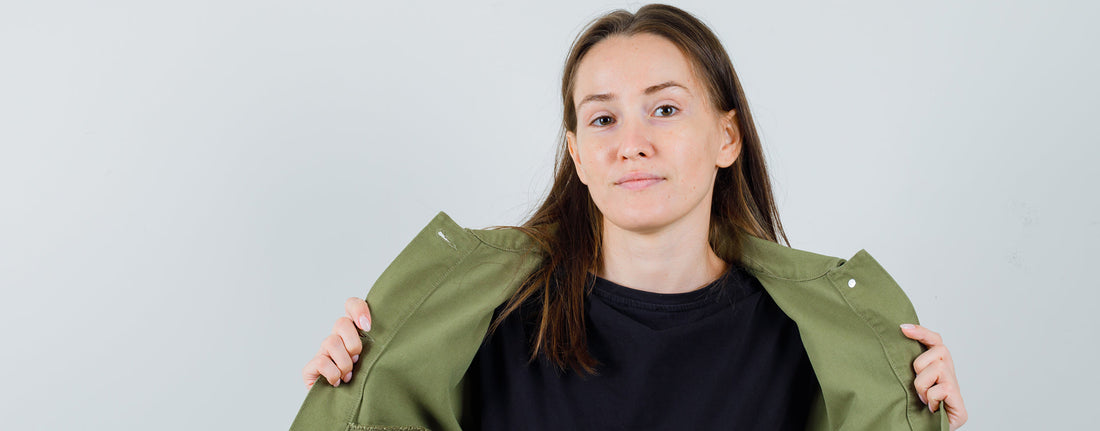
Why Less is More in Today’s Wardrobe
Share
Fashion has always been a reflection of culture, society, and personal identity. From the extravagant dresses of the Victorian era to the bold streetwear trends of the 21st century, clothing has evolved alongside human expression. But over the past decade, a new movement has emerged that is shifting the way people think about their wardrobes: minimalist fashion.
Minimalist fashion is more than just wearing neutral tones or owning fewer clothes. It’s a lifestyle choice that emphasizes simplicity, functionality, and timelessness. In an age of fast fashion, constant trends, and consumer overload, the minimalist approach is a refreshing alternative. It focuses on curating fewer pieces, but choosing better — clothes that last longer, look good in multiple settings, and align with your personal values.
This article explores the rise of minimalist fashion, why “less is more” has become the guiding principle for many, and how you can build your own minimalist wardrobe without sacrificing style.
The Origins of Minimalist Fashion
The minimalist philosophy has roots in art, architecture, and lifestyle movements long before it entered mainstream fashion. In the mid-20th century, designers like Coco Chanel and later Calvin Klein emphasized clean lines, simple silhouettes, and functional elegance. They proved that fashion didn’t need excessive details to be beautiful.
In Japan, designers such as Yohji Yamamoto and Issey Miyake took inspiration from Zen principles, focusing on calmness, space, and restraint. Their creations influenced global fashion, paving the way for the minimalist wardrobes we know today.
In recent years, the minimalist lifestyle trend — made popular by books like The Life-Changing Magic of Tidying Up by Marie Kondo — has pushed more people to rethink not just their homes, but also their closets.
Why Minimalist Fashion is Growing Today
-
Overwhelm of Fast Fashion
With hundreds of new styles being released every week, fast fashion creates decision fatigue and cluttered closets. Minimalism offers relief from the chaos. -
Sustainability Awareness
Consumers are increasingly aware of the environmental cost of fashion. A minimalist wardrobe reduces waste and promotes sustainable choices. -
Cost-Effectiveness
Instead of spending frequently on trendy pieces that wear out quickly, minimalists invest in timeless, high-quality essentials. -
Mental Clarity
Studies show that fewer choices can reduce stress and increase satisfaction. Owning fewer clothes makes daily dressing simpler and more enjoyable. -
Timeless Style
Minimalist fashion focuses on classic cuts, solid colors, and versatile items that never go out of style.
Key Elements of Minimalist Fashion
-
Neutral Color Palette
Think black, white, gray, beige, and navy. These shades are versatile and easy to mix and match. -
Simple Silhouettes
Minimalism avoids excessive frills, patterns, or embellishments. Clean lines and structure define the style. -
Quality Over Quantity
The focus is on durable fabrics like organic cotton, linen, or wool, and superior craftsmanship. -
Functionality
Each piece is designed to be practical for multiple occasions. For example, a plain t-shirt that works for casual outings, layering in the office, or even nights out.
How to Build a Minimalist Wardrobe
-
Declutter Your Closet
Start by removing items you no longer wear, don’t fit, or aren’t versatile. Aim for pieces that serve multiple purposes. -
Identify Core Essentials
For men: a classic t-shirt, tailored trousers, a blazer, and versatile sneakers.
For women: a plain top, tailored pants, a versatile dress, and minimalist shoes. -
Choose High-Quality Fabrics
Instead of chasing trends, invest in fabrics that last longer, feel comfortable, and age well. -
Prioritize Versatility
Ask yourself: Can I wear this piece at least three different ways? If not, it might not belong in a minimalist wardrobe. -
Stick to a Cohesive Color Palette
This ensures that everything in your closet works together seamlessly.
Benefits of Minimalist Fashion
-
Save Time
Less time deciding what to wear every morning. -
Save Money
Fewer impulse purchases and higher return on investment. -
Confidence Boost
Owning fewer pieces forces you to define your style more clearly. -
Eco-Friendly Lifestyle
By buying less, you contribute to reducing fashion waste and pollution.
Minimalism and the One-Product Concept
Some fashion brands have embraced a one-product philosophy, focusing all their energy on creating the perfect t-shirt, hoodie, or pair of jeans. By concentrating on a single piece, they can refine quality, sustainability, and design to perfection.
This aligns perfectly with minimalist values — one product that can serve many purposes, instead of many products that serve only one.
How Minimalism Fits Into Daily Life
Imagine waking up with a streamlined wardrobe: just a few carefully chosen items that all go together. You grab your favorite t-shirt, pair it with trousers or jeans, and you’re ready for the day — whether that’s work, a date, or just lounging at home.
Minimalism in fashion isn’t about being boring. It’s about finding freedom. When you own less, you can focus more on life, creativity, and experiences, rather than stressing over what to wear.
The rise of minimalist fashion is not just a style trend — it’s a mindset shift. In a world drowning in excess, minimalism is the breath of fresh air that many people need. By focusing on quality, simplicity, and timeless design, we can create wardrobes that work harder for us, while reducing our environmental footprint.
Minimalist fashion proves that less really is more. And for many, it’s the future of how we dress.
